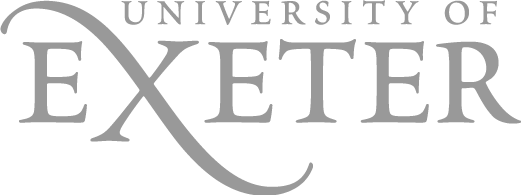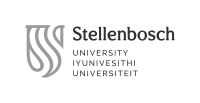S2422 The Time and the City: Image-Correction in the New Cinema
Professors
Schedule
Course description
The course will deal with the new kind of temporality presupposed by the types of interaction with urban milieu which appear in the recent decades. Deleuze’s theory of time and the contemporary cinema will be used as the main tools for exploring these new types of dealing with the modern city. Situationist’s “new urbanism” and Debord’s practice of drift will provide a background for understanding and developing new kinds of moving through the city, changing the generally accepted codes and ways of thinking.
In his letter to Serge Daney, composed soon after finishing his books on cinema, Gilles Deleuze reflects on the possibility of the «third type of image», additional to that of «movement-image» and «time-image», which two volumes of his work deal with. However, this reflection remains a vague assumption: Deleuze never completed third volume on cinema. From the moment of his death in 1995, many hypotheses were proposed concerning the nature of this new type of image.
While checking these hypotheses (like neuro-image, life-image, desire-image), the course will focus on a special kind of temporality which appears in the cinema of last decades, in order to create a concept of «correction-image» which describes the peculiar attitude to time which appears here. The central feature of this attitude is the changeability of the past. But this changeability is not a mere fluidity: in all the films of the new kind the spectator is confronted with the situation of changing the past in order to correct and improve it. The course will reconstruct the inner logic of Deleuze’s theory of the cinema, in order to show, that it provides the means of the analysis of this new kind of the cinema as a third type of image: correction-image.
During the course we will examine and discuss the appearances of this new kind of image in different cultural layers. From art-house and independent films to sci-fi and horror. The practical part of the course will include watching and analyzing such films as «Right now, wrong when» by Hong Sang-soo (2015), «Syndroms and Century» by Apichatpong Weerasethakul (2006), «Run Lola Run» by Tom Tykwer (1998), «Groundhog Day» by Harold Ramis (1993). We will discuss the ontological and epistemological questions connected to the new kind of image in order to understand its proper place in the context of modern culture and theory.
An important feature of all of these films is the role the interaction with modern urban environment plays in the process of changing the past. The drift through the city is one of the central tools in dealing with temporality in the cinema of the new type. The course will explore this new kind of city drift, while comparing it to the Guy Debord’s theory of drift. While Debord’s model of drift focuses on subjective changes, which are produced by randomization of everyday habitus and routes, the new kind of interaction with the urban milieu presented in the cinema of “image-correction” presupposes the possibility of the change which affects not only the consciousness, but the objective reality itself. The course will explore the groundings and technics of this new kind of drift, its connection to the changes in the modern urban enviroment. In the final
Learning outcomes
- Provide students with understanding of the new type of interaction with urban milieu and understand its theoretical grounds.
- Help students acquire skills of understanding and analyzing modern cinema
- Enable students to acquire a basic orientation in contemporary theories of temporality
Teaching and evaluation methods
- The course will mix theoretical and practical methods of teaching. During the first part of the course, we will read together and analyze Deleuze’s texts on cinema and time, as well as other theoretical writings on new types of image in contemporary culture. It the second part of the course we will watch and discuss together the films made in last decades, while trying to apply the acquired knowledge and use it in this concrete analysis. In the final part of the course the students will be proposed to accomplish their own drift of the new kind in Venice urban environment.
- The evaluation of the course will be base on activity during the seminars (40%) and a final essay/report (60%,) in which students will summarize their own experience of the new interaction with the city based on the skills acquired during the course.
Selected Bibliography
Main literature
Debord, G. Theory of the drift, Les Lèvres Nues #9 (November 1956). English translation:
https://www.cddc.vt.edu/sionline/si/theory.html
Deleuze, G. Cinema I: The Movement-Image. University of Minnesota Press, 1997
Deleuze, G. Cinema II: The Time-Image. University of Minnesota Press, 1997
Additional literature
Casarino, C. Three Theses on the Life-Image (Deleuze, Cinema, Bio-Politics) // Releasing the
Image: From Literature to New Media / Ed. by J. Khalip and R. Mitchell. Stanford University Press, 2011. P. 156–168
Davis, N. The Desiring-Image: Gilles Deleuze and Contemporary Queer Cinema. Oxford University Press, 2013
Galloway, A. The Interface Effect. Polity Press, 2012
Pisters, P. The Neuro-Image: A Deleuzian Film-Philosophy of Digital Screen Culture. Standford University Press, 2012
Sánchez, S.Towards a Non-Time Image: Notes on Deleuze in the Digital Era // Post Cinema:
Theorising 21-st century film / Ed. by S. Denson and J. Leyda. Reframe Books. P. 171–192.
Shaviro, S. Reversible Flesh // Post-Cinema and / as Speculative Media Theory. Montreal, 2015.
URL.: https://vimeo.com/123993075
Movies to be watched
«Groundhog Day» (1993) Harold Ramis
«Reconstruction» (2003) Christoffer Boe
«Right now, wrong when» (2015) Hong Sang-soo
«Run Lola Run» (1998) Tom Tykwer
«Syndroms and Century» (2006) Apichatpong Weerasethakul
Last updated: January 23, 2024


















